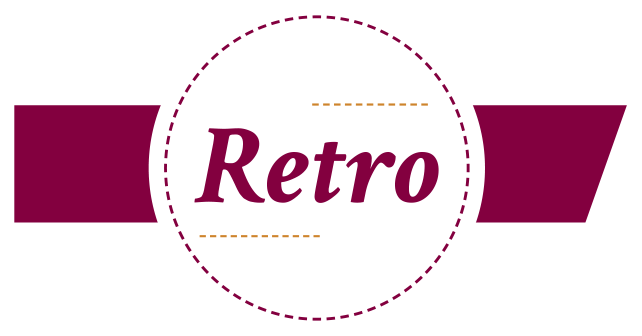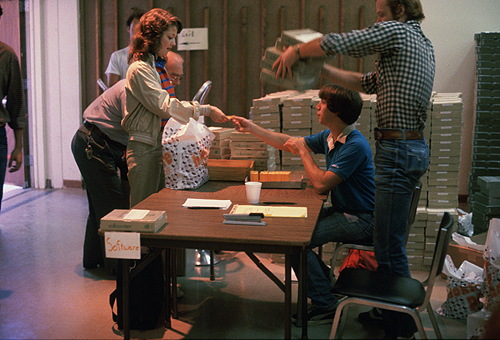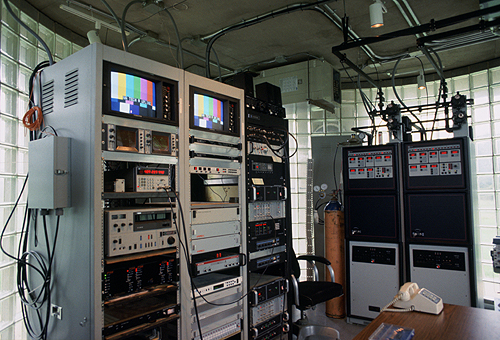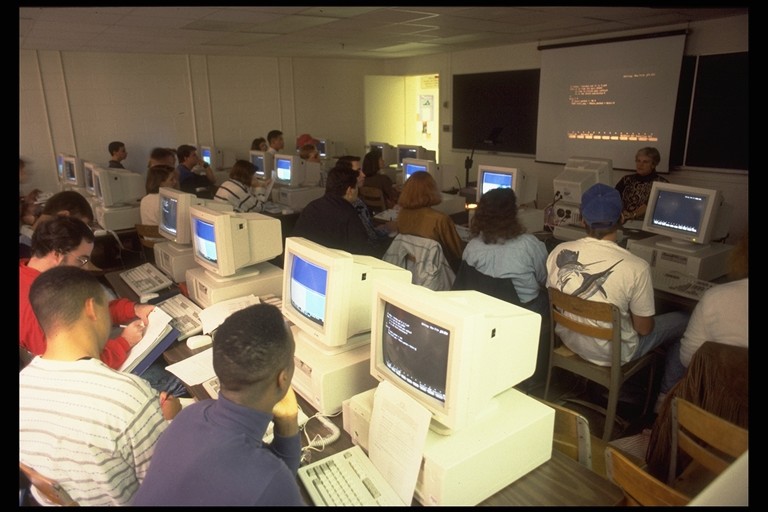THE COMPUTER EVOLUTION
The Osborne 1, released in 1981, is used by archivists to retrieve disc-stored data.
The computers that first arrived at Virginia Tech in the mid-20th century bear little resemblance to their modern counterparts. Over time, hardware has diminished in size while increasing significantly in speed and capability. Today’s ubiquitous smartphones are billions of times faster and more powerful than the room-sized supercomputers of the 1950s.
As early as the 1980s, Virginia Tech students received specialized software at the beginning of each academic year, which enabled them to log onto the university’s computer system. Not every student owned a personal computer, so individual workstations in computer labs were in high demand. Alumni who attended in those years remember waiting for hours to use computers at Newman Library for classwork.
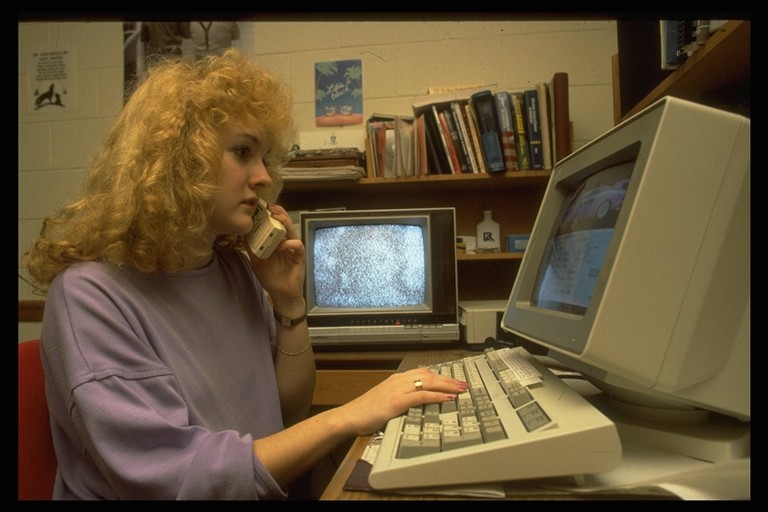
A female student playing a computer game while on the telephone in 1988.
The computing center handed out CDs with browsers, email clients, and connection set-ups for modem and ethernet connection to the network for both Windows 95/98/NT and Macintosh OS 7.5.3 - 8.1.
“Students today have their laptops and pads, but back in the day, you signed up on a chalkboard for a computer and once you scored that thing, you were on it for 9, 10, 11 hours,” said Chris Bryan, an alumna who attended Tech for computer science in the mid-’80s. “Everybody was working to crack the same problems and that made the computer lab feel like a big think tank. It was not unheard of to order in coffee and donuts.”
Since 1998, however, each incoming Virginia Tech undergraduate has been required to own a personal computer. The university establishes baseline specifications for each entering class, and some departments and colleges recommend a specific configuration to meet the special needs of their subject area.
Like vinyl records and vintage gaming station, those computers of yesteryear have found new life. Today, Special Collections, a unit within the University Libraries, has begun to acquire older computers, which are the only way to access legacy material on outdated media such as floppy discs. Tech’s collection includes an Osborne 1, released in 1981 as the first commercially successful portable microcomputer. Archivists are using the Osborne to retrieve disc-stored data but the outdated operating system would be highly vulnerable to the bugs and viruses of 2018, making it unsafe for internet use. MA
Flashback: For more information about the Osborne 1, contact Community Collections Archivist Anthony Wright de Hernandez at antwri@vt.edu.
